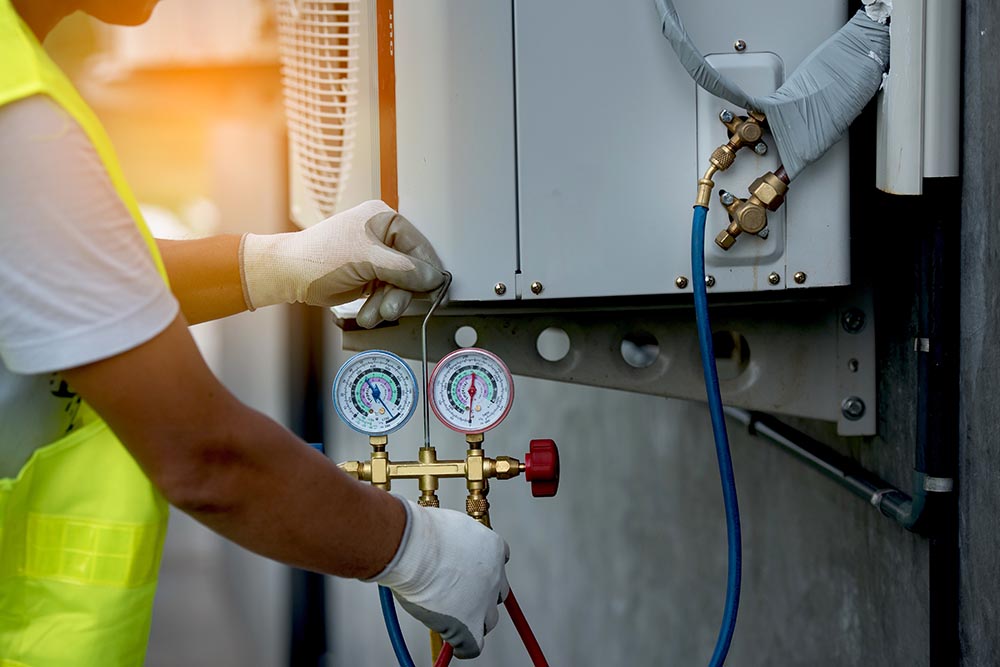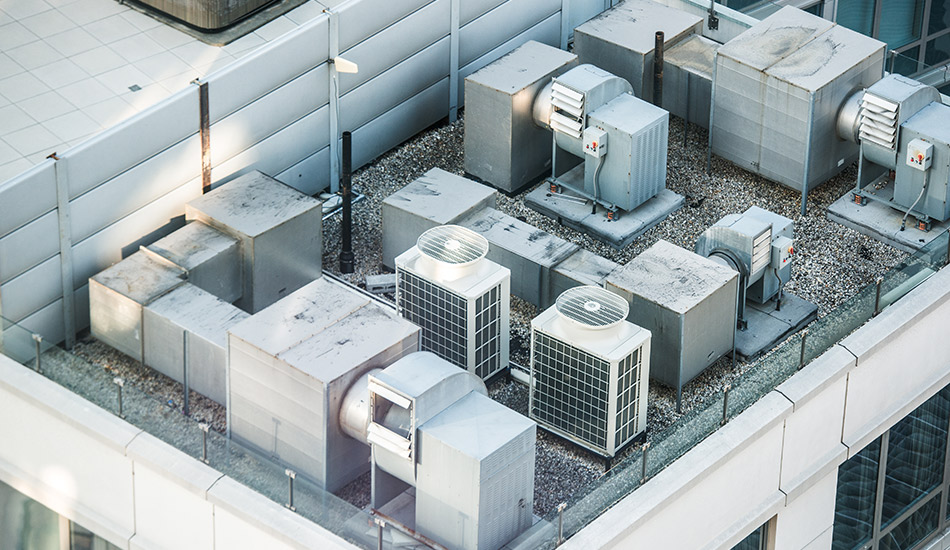heat pump service: What It Includes and Why It Matters
heat pump service: What It Includes and Why It Matters
Blog Article
How a Heatpump and Furnace Interact to Maximize Your Home's Home heating Effectiveness
Comprehending just how a heatpump and heating system interact is vital for home owners looking for effective heating services. Each system has its strengths, supplying a balanced strategy to home convenience. The heatpump succeeds in modest temperatures, while the heater delivers quick warmth throughout extreme cold. This harmony not only decreases energy expenses yet also boosts the lifespan of both home appliances. What elements affect this collaboration, and just how can homeowners optimize their benefits?
Recognizing Heat Pumps: Exactly How They Function
Although lots of people might be unknown with their internal workings, warm pumps play a crucial function in modern-day furnace. These tools run by transferring heat from one place to another, utilizing the principles of thermodynamics. In chillier months, a heatpump removes heat from the outside air, ground, or water, and transfers it indoors to warm the home. Conversely, during warmer months, it can reverse the procedure, working as an air conditioner by removing warmth from inside to the outside.Heat pumps include an evaporator, condenser, expansion, and compressor valve. The cooling agent within the system takes in warm as it evaporates at reduced temperature levels and stress. The compressor then raises the stress and temperature level of the cooling agent, enabling it to launch warm as it condenses. This effective process can significantly decrease power usage compared to typical heating methods, making heat pumps a lasting choice for climate control in homes.
The Role of Heaters in Home Heating
Heaters play an important function in home heating by offering a trusted source of warmth throughout the chillier months. They operate by generating heat via burning or electric resistance, distributing it throughout the home via air ducts or glowing systems. The efficiency of a furnace is frequently measured by its Yearly Fuel Utilization Efficiency (AFUE) score, which indicates just how properly the device transforms gas right into heat.Furnaces can use numerous energy sources, consisting of natural gas, oil, electrical power, or gas, enabling homeowners to select one of the most suitable choice for their demands. Unlike warm pumps, which may have a hard time in severe cold, heating systems maintain regular performance, ensuring that indoor temperature levels stay comfy no matter exterior conditions. Furthermore, contemporary heating systems commonly come outfitted with sophisticated innovation, such as clever thermostats and variable-speed blowers, boosting their efficiency and responsiveness. This convenience makes heaters a crucial element in all-encompassing home heating techniques.

Benefits of Utilizing Both Solutions Together
Combining the toughness of both heaters and heat pumps can bring about an extra reliable and reliable home heating solution. Using both systems allows homeowners to make use of the warmth pump's power performance during milder temperatures while relying upon the furnace for more severe cold conditions. This twin approach can significantly decrease energy expenses, as warmth pumps consume less electricity than standard heating methods when temperature levels are moderate.Additionally, using both systems with each other can boost convenience levels in the home. Heatpump can provide regular, also home heating, while heating systems can promptly increase ambient temperatures when required. The assimilation of both systems can extend the life expectancy of equipment by decreasing wear and tear on each device, as they share the workload. Eventually, home owners can enjoy a well balanced, cost-effective home heating solution that readjusts flawlessly to differing climate problems, making sure a cozy and inviting home throughout the cold weather.
Just How Warmth Pumps and Furnaces Complement Each Other
They produce a corresponding heating system that makes the most of effectiveness and convenience when house owners integrate warm pumps and heaters. Warmth pumps operate by transferring warm from the outside air or ground, making them highly effective in modest environments. They stand out throughout milder temperatures, giving cost-efficient home heating. Conversely, furnaces generate heat through combustion or electric resistance, providing strong, immediate heat throughout severe cool conditions.The mix of these 2 systems enables vibrant modifications based on temperature level changes. During warmer months or milder winter season days, the heatpump can take the lead, conserving power and lowering expenses. As temperature levels drop, the furnace can seamlessly involve, making certain regular heat throughout the home. This synergy not only enhances power usage but additionally boosts the lifespan of both systems, as each device runs within its optimal efficiency array. With each other, they create a well balanced environment that adapts to differing climate demands.
Optimizing Efficiency: Tips for Homeowners
Homeowners can boost their heating efficiency through numerous functional strategies. Establishing a routine upkeep routine, integrating clever thermostat modern technology, and carrying out effective insulation and securing solutions are key actions. These steps not just enhance convenience yet likewise minimize energy prices.
Routine Maintenance Arrange
To guarantee optimal heating effectiveness, establishing a normal maintenance routine is important for any type of home. House owners should focus on regular evaluations of both heat pumps and heating systems to identify peak performance. This consists of altering air filters each to 3 months, as blocked filters can substantially minimize performance. Additionally, scheduling expert upkeep a minimum of yearly enables technicians to determine and resolve potential issues before they rise. Property owners must additionally cleanse the heatpump's outdoor system to stop particles accumulation that can prevent air movement. By sticking to a normal upkeep schedule, property owners not only improve their heating unit' efficiency however likewise prolong their life expectancy, leading to higher convenience and minimized energy prices throughout the chillier months.
Smart Thermostat Combination
Integrating a clever thermostat right into a home heater can considerably boost power efficiency, especially as it enables specific control over temperature settings. These gadgets can learn the homeowner's routine and choices, automatically adjusting the temperature level to enhance convenience while lessening power usage. As an example, they can decrease heating during times when the home is empty, minimizing unnecessary intake. Lots of smart thermostats likewise offer real-time energy use data, making it possible for homeowners to make educated choices regarding their home heating practices. Furthermore, remote access by means of smartphone applications permits customers to change setups from anywhere, guaranteeing the home is cozy upon return. Generally, smart thermostat assimilation not only enhances convenience but substantially adds to power savings and effectiveness.
Insulation and Securing Solutions
Smart thermostats play a try these out vital function in power efficiency, however their performance can be greatly boosted by proper insulation and securing services. Home owners need to focus on protecting floorings, wall surfaces, and attic rooms to reduce warm loss. High-quality insulation materials, such as spray foam or fiberglass, can considerably improve thermal resistance. Additionally, sealing gaps around doors, air ducts, and home windows stops chilly air seepage and heat escape. Weatherstripping and caulking work approaches for addressing these leakages - heat pump installation ooltewah tn. Normal evaluations for air leakages, together with using blower door examinations, can help recognize issue locations. By purchasing insulation and sealing, house owners can optimize the performance of their heater, eventually leading to reduced power intake and reduced utility costs
Usual Myths Concerning Warmth Pumps and Furnaces
What mistaken beliefs surround heat pumps and furnaces? Many people incorrectly think that heatpump are ineffective in cooler environments. Actually, contemporary warm pumps are made to run successfully even in low temperatures, supplying dependable heating throughout winter months. One more typical misconception is that heaters are always much more effective than warmth pumps. This depends on the certain energy sources and efficiency scores of the units in inquiry. Some might likewise assume that utilizing both systems concurrently is unneeded, yet as a matter of fact, this combination can optimize home heating performance, specifically throughout severe weather. In addition, individuals typically think that heat pumps need constant maintenance, when in reality, they have comparable upkeep needs to standard home heating systems. By exposing these misconceptions, homeowners can make more educated choices regarding their home heating alternatives, ultimately bring about improved comfort and power efficiency in their homes.
Maintenance Considerations for Combined Solutions

Often Asked Inquiries
Can Heat Pumps Work Properly in Incredibly Cold Climates?
Warmth pumps can battle in extremely cold climates as a result of reduced effectiveness and warm extraction limitations. Nevertheless, innovations in technology have resulted in versions designed for better performance in such conditions, improving their practicality in severe atmospheres.
How Long Do Warmth Pumps and Furnaces Generally Last?
Heat pumps generally last 15 to twenty years, while furnaces have a life expectancy of 15 to thirty years. Regular maintenance can expand their durability, making sure effective operation and decreasing the need for premature replacements.

What Is the Average Price of Installing Both Equipments?
The ordinary cost of mounting both a heatpump and a heater generally varies between $5,000 to $10,000 - heat pump installation ooltewah tn. Aspects influencing this expense consist of system size, installation intricacy, and local labor rates
Are There Tax Obligation Incentives for Making Use Of Energy-Efficient Heating Solutions?
Several homeowners make inquiries about tax rewards for energy-efficient furnace. Different government and state programs commonly provide credit ratings or discounts, urging the adoption of sustainable modern technologies to minimize energy intake and advertise ecological obligation.
Exactly how Do I Select the Right Size Heatpump and Heater?
Choosing the appropriate size heatpump and furnace involves calculating the home's square video, taking into consideration insulation quality, and examining regional climate. Consulting an expert can guarantee optimal system efficiency and energy effectiveness based on certain requirements. ductless mini splits. Recognizing exactly how a warmth pump and furnace work with each other is essential for house owners looking for efficient heating remedies. In colder months, a heat pump removes warm from the outside air, ground, or water, and transfers it indoors to warm the living room. When homeowners incorporate warmth pumps and heaters, they develop a complementary heating system that makes best use of efficiency and comfort. Heat pumps run by moving warm from the outdoors air or ground, making them extremely efficient in modest environments. Heat pumps can struggle in extremely cold environments due to minimized efficiency and warm extraction limitations
Report this page